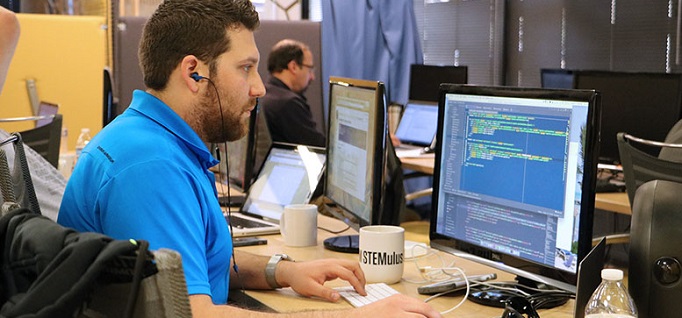Rethinking the transcript
By Jakob Schiller
June 3, 2020
A New Mexico community college is working with a group of other stakeholders to develop a new way to more easily track workers’ credentials and skills to better align them with workplace needs.
Central New Mexico Community College (CNM) in Albuquerque is among a handful of organizations testing a program recommended by a blue-ribbon workforce development council that aims to better track learners’ credentials, whether college degrees, short-term postsecondary certificates, employer-issued training or work experience.
The current system of verifying credentials is piecemeal, which can frustrate both job seekers and employers looking for skilled workers. The so-called “interoperable learning record,” or ILR, would serve like a souped-up digital college transcript and resume that would be updated and available instantly.
Currently, four major employers – IBM, Wal-Mart, Salesforce and Workday – have started pilots to test ILRs under the auspices of the American Workforce Policy Advisory Board, which comprises leaders from government, education, industry and labor. (Community colleges are represented on the council by American Association of Community Colleges [AACC] President Walter Bumphus, WSU Tech President Sheree Utash [an AACC board member] and Jay Box, president of the Kentucky Community and Technical College System.)
CNM is among the participating partners – along with the National Student Clearinghouse and Western Governors University – in IBM’s test project, which will focus on using the tool in the cybersecurity field.
“This program will hopefully help a lot of people come back to school, re-tool and then efficiently head right back out to the workforce,” said Tobe Phelps, CNM’s chief technology innovation officer and one of the people leading the IRL project.
Hit it will work
Currently, students who graduate from any higher education institution receive a diploma and transcripts. These documents prove they did the work and provide some detail about how well they did in their classes. But the document says nothing about what the students mastered while in class.
With an IRL, however, students will have a verifiable, easily-transferable record backed up by blockchain that provides much more detail about where they’ve excelled and which skills they can now bring to another institution or a job.
For example, if a student at CNM receives soft-skill microcredentials for critical thinking and creative problem solving while at the college, both of those certifications would go on their IRL. Specific skills they learned in a credit class, or in a non-credit class like Ingenuity’s Deep Dive Coding Bootcamps, will also be recorded. This detail will then allow the admissions staff at the student’s next college, or the hiring officer at their next job, to see more precisely if that graduate is the right fit.
“IRL isn’t quite a transcript or a resume, it’s more,” Tobe said.
First steps
To start, the pilot will focus on helping students first move from college to college more effectively. CNM will be able to see how its students move from a community college to a four-year institution, and WGU will follow how its students move from a four-year college to a graduate degree.
“As an example, when colleges evaluate credits, it’s pretty subjective,” Tobe said. “You could take your credits to 20 different institutions and they will all give you different credits. An IRL will make that process more efficient.”
After the program is tested between colleges, it will then be deployed with employers. The hope is that IRLs will be located in a giant database that employers can search. They could type in a list of specific skills they need and search for graduates with those skills – and feel confident that the graduate is indeed properly trained because those skills would be certified.
Cybersecurity is one place where the program would like to focus and one of the places where CNM will implement IRLs.
“Right now you go on Indeed or Linkedin and you have no idea what kind of candidate is really sitting there,” Tobe said. “You get these resumes with all these great looking entries, but you have no idea if any of them are actually valid.”
Critical timing
The potential use for the ILR system is enormous, according to the national policy advisory board. It could include 160 million learners, more than six million employers, 700,000 unique credentials, 23,000 apprenticeship programs and 7,000 higher education institutions.
In terms of a timeline, Tobe said the advisory board’s working group hopes to have a significant portion of the pilot completed by the end of this calendar year. The pandemic has accelerated the project, and the group’s members know their work has the potential to help millions of people recover.
“We’re moving quick,” Tobe said.
In fact, the board noted the importance of developing ILRs in its recent “call to action” to help in the post-pandemic workforce development recovery.



